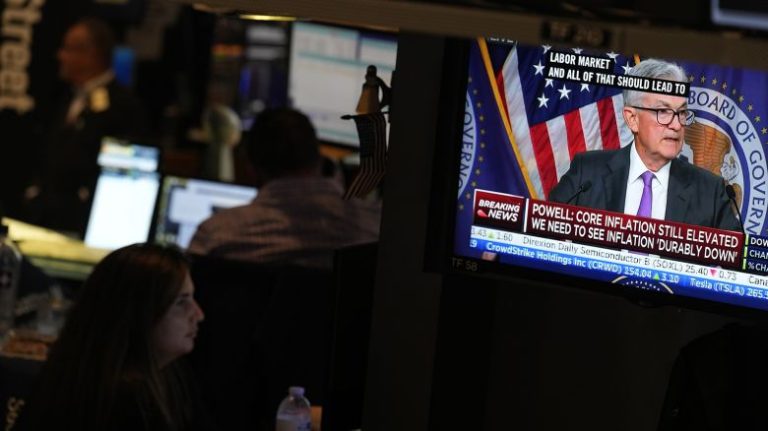After months of uncertainty about the economy’s health and whether bank stresses from this past spring would weigh too heavily on credit conditions, the possibility of the Federal Reserve pulling off a soft landing is looking brighter.
The Fed last Wednesday raised interest rates by a quarter point, in line with expectations, and maintained that it will remain data dependent in deciding whether to pause or raise rates in September.
But Chair Jerome Powell offered an important update regarding the Fed’s economic projections.
“The staff now has a noticeable slowdown in growth starting later this year in the forecast, but given the resilience of the economy recently, they are no longer forecasting a recession,” Powell said.
It’s unclear what the difference is between a “noticeable slowdown in growth” versus a recession, and some market signals indicate a recession is still possible. But the Fed’s revision in its recession forecast suggests that at least for now, officials aren’t incredibly worried about what recent data has revealed about the economy.
It’s not difficult to see why – economic data released this past week points to a cooling but still strong economy. The Personal Consumption Expenditures price index rose 3% for the 12 months ended in June, according to fresh data from the Commerce Department. That marks the second straight month of declines.
The core PCE index, which strips out energy and food prices, rose 4.1% in June from the prior year. While that’s more than double the Fed’s 2% target, it’s below economists’ expectations of a 4.2% annual increase, and lower than a yearly increase of 4.6% in May.
“If inflation metrics continue to cool, investors should expect the Fed to pause at their next meeting in September,” said Jeffrey Roach, chief economist at LPL Financial.
Other economic measures also brought good news. US gross domestic product, the broadest measure of economic output, grew faster than expected in the April-through-June period.
Meanwhile, US wage gains cooled in the second quarter, showing some easing of inflationary pressures, according to the latest Employment Cost Index data from the Bureau of Labor Statistics.
Still, it’s far too soon to assume that a soft landing is in the bag. The Fed hinted last week that it could hike rates once again this year.
Plus, it could take at least a year for the effect of rate hikes to make its way through the real economy, according to some research, and it’s already been more than a year since the Fed began lifting rates in March 2022.
There’s more economic data slated for release this coming week, and the US labor market is in focus. On deck are the Job Openings and Labor Turnover Survey for June and ADP National Employment Report for July.
The Bureau of Labor Statistics’ latest jobs report is due Friday. Economists expect a gain of 200,000 jobs in July, a slight decrease from 209,000 added in the prior month. The unemployment rate is expected to hold steady at 3.6%.
The June report saw the lowest monthly gain since a decline in December 2020. But last month’s job growth still outpaced the pre-pandemic average of about 183,000 net jobs gained per month.
WhatsApp unveils new video messaging feature
WhatsApp will now let you record and send video clips directly in the messaging app, the Meta-owned platform announced this week.
The instant video messages can be up to 60 seconds long, and are similarly protected with the app’s end-to-end encryption service.
“We think these will be a fun way to share moments with all the emotion that comes from video, whether it’s wishing someone a happy birthday, laughing at a joke, or bringing good news,” the company said Thursday in a blog post.
The new feature will be similar to sending a voice message on the platform, the company added, and there will also be a way to record the video hands-free.
The company said the new update has begun rolling out on the app and will be available to everyone in the coming weeks.
— CutC by cnn.com


